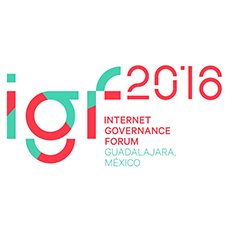A post IANA transition ICANN
7 Dec 2016 17:30h - 19:00h
Event report
[Read more session reports and live updates from the 11th Internet Governance Forum]
This workshop, moderated by Mr Matthew Shears of the Center for Democracy & Technology (CDT), was organised as a roundtable. It brought together people from various communities with an active role in the Internet Assigned Numbers Authority (IANA) stewardship transition process. The workshop aimed to help outsiders understand the IANA transition, through minimal use of abbreviations, no technical details, and thorough explanations of terms and processes. The session aimed to explain the transition process, to give an update on where the post-transition IANA stands; and to examine the portability of the model as a best practice: can it apply in other settings?
Mr Leon Sanchez, Internet Corporation for Assigned Names and Numbers (ICANN), went through the history of the IANA transition process, explained what the process means, and described IANA’s functions. He highlighted some important conditions of the process. The proposal for the transition had to:
- receive wide support from the community;
-
foster and enhance the multistakeholder model;
-
maintain or guarantee the security, stability, and resiliency of the Domain Name System;
-
satisfy the expectations of the IANA services clients; and
-
maintain the nature of the Internet as a free and open resource.
Sanchez stressed the important role of all communities that took part in the process and of the bodies that steered the whole process – the Cross Community Working Group (CCWG) and the IANA Stewardship Transition Coordination Group (ICG). In his final note, he described a second phase of work that is happening now. This encompasses topics of diversity, human rights, jurisdiction, ombudsman, support organisation accountability, advisory committees accountability, staff accountability, transparency, and more.
The second part of the workshop consisted of panellists’ experience from the transition process, focussing on challenges, and positive and negative experiences. In most cases, the speakers agreed with other panellists and reiterated points such as the added value of the multistakeholder model (different views and knowledge), the useful and proactive role of coordination bodies, and the dedication of the communities to finish the task.
Ms Farzaneh Badii, University of Hamburg, appreciated the way that the communities managed to reach consensus among divergent views and interests, which is not common in policymaking. According to Badii, the recommendations were implemented more or less accurately in the bylaws, which is certainly an achievement in ICANN. The negative side was the time pressure.
Ms Olga Cavalli, Internet Society – Argentina, identified the diversity as a challenge and pointed out that the representation of some regions was unbalanced. She appreciated the fact that ICANN provided language support and ensured that content was translated.
Ms Carolyn Nguyen, Microsoft, suggested that the success of the IANA transition process confirmed the value of multistakeholderism. The passion and commitment of the community to work through difficult issues was vital. Nguyen compared the IANA transition with the WSIS+10 process, and highlighted how significantly the multistakeholder and governmental approaches contrasted. One negative aspect of the process was the lack of sufficient information about what was going on to share with the broader public at a general level (not content from working groups) so that even the broader community would understand the process.
Ms Izumi Okutani, Japan Network Information Center (JPNIC), identified some success factors of the transition: people who represented various groups did not have predefined positions; the communities respected each other’s expertise; and the process requested each of the three operational communities to develop its own part of the proposal and not to try to draft everything.
Mr Jimson Olufuye, African ICT Alliance, appreciated the consistent feedback from working groups. He asked for more outreach, in order to include more people and to build better knowledge capacity in the people engaged in the process.
Sanchez observed that it took some time for all of the participants in the process to learn to ‘speak the same language,’ in terms of common understanding of important terminology. On the other hand, the human rights subgroup was very fast in delivering reports and proposals because the members already ‘spoke the same language’ due to previous cooperation. Sanchez also reiterated the vital role of the proactive ICANN Board.
Ms Lousewies van der Laan, ICANN, reported that the process was very transparent and easy to understand. Even a newcomer to the process felt included.
Mr Steven del Bianco, NetChoice, named three success factors: first, the importance of the task itself; second, it was the community that gave rise to the entire accountability plan, not the ICANN Board or the National Telecommunications and Information Administration (NTIA); and third, the political deadline of the end of the Obama administration in 2016.
The third part of the workshop focused on the transferability aspect of the transition. Could it be used as a model, and if so, where might it apply? Although the majority of speakers agreed that the IANA transition was a successful model, some had doubts about transferability. Badii, for example, raised concerns that the multistakeholder approach might not be transplanted under all circumstances. The institutional design of ICANN might be different than other institutions. Okutani expressed concerns that the approach might not be suitable for some types of negotiations. It might work only in situations where different shareholders share the same goal. Others suggested that the approach might apply well to free trade agreements or ITU processes.
By Radek Bejdak
Related topics
Related event

